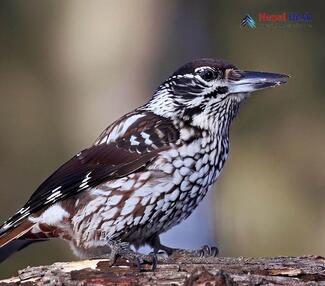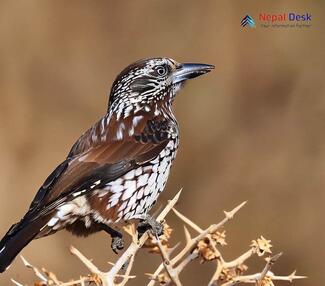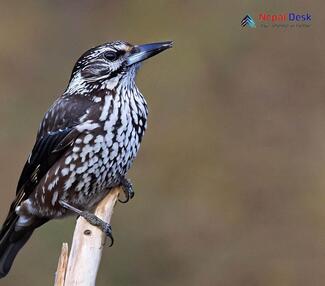The Eurasian Nutcracker is a fascinating bird species that has captivated birdwatchers and nature enthusiasts worldwide. Known by its scientific name, Nucifraga caryocatactes, and also called spotted nutcracker or simply nutcracker, this elusive bird can be found across the vast expanses of Europe and Asia. It is slightly larger than the Eurasian jay. The Eurasian Nutcracker is one of three currently-recognized species of nutcracker. The Kashmir nutcracker (Nucifraga multipunctata) was formerly considered a subspecies of the spotted. The other member of the genus, Clark's nutcracker (N. columbiana), occurs in western North America.
However, the presence of the Eurasian Nutcracker in Nepal is less known and rarely observed, making it an exciting topic for birders and researchers alike. Now, let us explore its various details:
A Closer Look at the Eurasian Nutcracker
The Eurasian Nutcracker is an intriguingly charming bird with a distinct appearance. Measuring 32 to 38 cm in length, this crow-like creature boasts a robust body covered in chocolate-brown plumage with striking white streaks. This pattern helps them camouflage efficiently within their natural habitat of coniferous forests. Unlike their more commonly-known relatives, jays, and magpies, the Eurasian Nutcracker leads a rather inconspicuous lifestyle. Their omnivorous diet primarily consists of pine seeds, but they also enjoy a variety of nuts, berries, insects, and occasionally small vertebrates.
Nepal: A Rare Home for the Elusive Bird
Although Nepal boasts an incredibly diverse avifauna with over 900 recorded bird species, sightings of the Eurasian Nutcracker are quite rare. The primary reason behind this rarity is their preference for high-altitude coniferous forests located between 1,900 and 3,600 meters above sea level. Nepal's limited stretches of coniferous forests house a small population of these birds in regions like Koshi Tappu Wildlife Reserve and Sagarmatha National Park. These areas have been identified as critical habitats for the conservation of many resident and migratory birds as well as the enigmatic Eurasian Nutcracker.
A Symbiotic Relationship with Pine Trees
The Eurasian Nutcracker plays an essential role in maintaining its ecosystem. The bird species acts as a seed disperser for pine trees, which provides them with food and shelter. Nutcrackers are well-adapted to extract pine seeds from cones and store them in crevices or burrowed holes for future consumption. This behavior is known as "scatter-hoarding" and contributes significantly to the regeneration of coniferous forests. Moreover, Eurasian Nutcrackers have an impressive spatial memory, allowing them to retrieve stored food during harsh winter months when resources are scarce.
The Elusive Beauty: An Object of Curiosity
Due to its rarity in Nepal and fascinating behaviors, the Eurasian Nutcracker has become a sought-after species for birdwatchers and researchers alike. Further studies focused on this unique bird could provide invaluable insights into its ecology and aid in the development of effective conservation strategies. The elusive beauty of Nucifraga caryocatactes highlights the vast biodiversity found in Nepal and serves as a reminder of the many wonders that nature has to offer.




